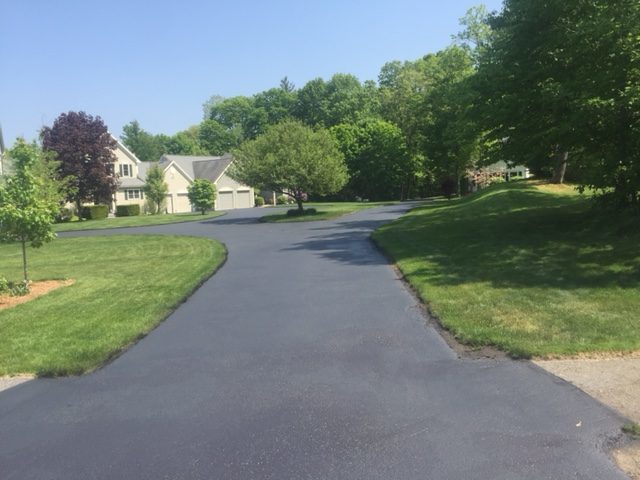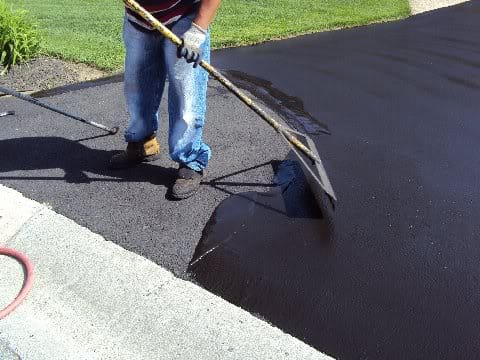Improve Durability with Cold Mix Asphalt: Expert Sealing Solutions
Wiki Article
Cold Mix Asphalt Vs. Hot Mix Asphalt: Which Is Right for You?

Structure Differences
Cold mix and hot mix asphalts vary considerably in their make-up, with unique characteristics that affect their efficiency and applications. Cold mix asphalt is produced by emulsifying the asphalt binder with water and an emulsifying representative prior to mixing it with accumulation. This approach enables the asphalt to be convenient at reduced temperatures, making it optimal for temporary repairs and for use in chillier weather. Warm mix asphalt, on the various other hand, is produced at heats, generally in between 300-350 ° F, which assists to achieve better compaction and a much more resilient last product. The hot mix asphalt manufacturing process includes heating up the aggregate and asphalt binder separately prior to integrating them at the asphalt plant.
Additionally, cool mix asphalt often tends to be less thick and more versatile than warm mix asphalt. This adaptability makes it far better matched for areas with higher degrees of movement, such as driveways or roadways with rush hour. In comparison, hot mix asphalt is recognized for its high sturdiness and resistance to rutting and fracturing, making it a recommended choice for highways and high-traffic roadways where longevity is critical.
Installation Refine Variations
The procedure of mounting cool mix and warm mix asphalt displays notable variations in their needs and treatments. Cold mix asphalt, being a more adaptable product, can be used directly from the bag or container onto the pit or harmed area. It calls for marginal preparation work, such as cleaning up the location and compacting the chilly mix with hand tools. This makes it a convenient choice for quick and short-lived repairs. On the other hand, hot mix asphalt demands a much more fancy installation process. It involves warming the mixture to heats before laying it down on a properly prepared base. The preparation includes compacting the base, applying a tack coat, and utilizing heavy equipment like pavers and compactors for a sturdy and smooth surface. Because of the heating requirements, warm mix asphalt installments are normally accomplished by experts with specialized devices, ensuring an extra structurally sound and permanent outcome.Durability and Longevity Variables
When thinking about asphalt choices, sturdiness and longevity are crucial elements to evaluate for long lasting sidewalk efficiency. Hot mix asphalt (HMA) is recognized for its outstanding durability and longevity.
In regards to longevity, HMA commonly surpasses CMA due to its premium stamina and resistance residential or commercial properties. HMA pavements have a longer life span, needing much less frequent repairs and upkeep, which can convert to More Info set you back financial savings in the long run. In addition, HMA sidewalks are more quickly customizable to fulfill particular project needs, further boosting their toughness.
Expense Factors To Consider
Taking into consideration the economic ramifications is an important aspect when examining the selection between warm mix asphalt (HMA) and cold mix asphalt (CMA) for pavement tasks. While the preliminary price of hot mix asphalt is typically greater than that read here of cool mix asphalt, HMA usually gives a much more cost-effective remedy in the lengthy run due to its premium resilience and longevity.In addition to material expenses, it's necessary to consider the costs linked with installment and maintenance when contrasting HMA and CMA. Eventually, the decision between HMA and CMA must take right into account not just the preliminary price however also the lasting monetary effects to establish the most cost-efficient alternative for the particular sidewalk job.
Environmental Influence Contrast
Contrast of the ecological influences in between warm mix asphalt (HMA) and cold mix asphalt (CMA) exposes distinct distinctions in sustainability methods. HMA manufacturing calls for high temperature levels, leading to boosted energy intake and greenhouse gas discharges.Additionally, the use of CMA usually entails recycling existing asphalt pavement, advertising resource conservation and lowering the quantity of waste sent out to landfills. By deciding for CMA over HMA, road building and construction projects can contribute favorably to ecological preservation initiatives.
Conclusion
In verdict, the choice between chilly mix asphalt (CMA) and warm mix asphalt (HMA) relies on numerous elements such as composition, installation process, longevity, longevity, price, and ecological influence. asphalt repair. While CMA uses a cost-effective and quick remedy for small repairs, HMA ensures superior resilience and long life for hefty website traffic locations. Think about these elements carefully to figure out which sort of asphalt is the ideal selection for your paving requires

Taking into consideration the monetary implications is a vital element when assessing the selection between hot mix asphalt (HMA) and cool mix asphalt (CMA) for sidewalk projects. While the first price of warm mix asphalt is usually greater than that of cool mix asphalt, HMA usually supplies a more economical remedy in the lengthy run due to its premium longevity and longevity. asphalt repair.Comparison of the environmental effects in between warm mix asphalt (HMA) and cool mix asphalt (CMA) exposes distinctive distinctions in sustainability practices.In verdict, the choice in between chilly mix asphalt (CMA) and warm mix asphalt (HMA) depends on various elements such as make-up, installation process, longevity, durability, cost, and ecological impact
Report this wiki page